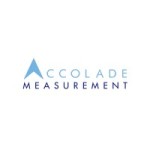Structural movement monitoring is a crucial aspect of construction and infrastructure projects, providing valuable data to ensure the safety, stability, and integrity of buildings, bridges, tunnels, and other structures. Whether you're embarking on a new construction project or managing the ongoing maintenance of existing structures, careful planning and consideration of key factors are essential for successful structural movement monitoring. In this guide, we'll explore the important considerations to keep in mind when planning for structural movement monitoring to help you make informed decisions and achieve optimal results.
1. Purpose and Objectives
Before implementing structural movement monitoring, it's essential to define the purpose and objectives of the monitoring program. Determine what specific aspects of structural movement you need to monitor, such as settlement, vibration, deformation, or tilt. Identify the goals of the monitoring program, whether it's to ensure compliance with design specifications, detect potential structural issues, or provide early warning of excessive movement that could compromise safety. Clearly defining the purpose and objectives will guide the selection of monitoring techniques and instrumentation required for your project.

2. Site Selection and Instrument Placement
Selecting the appropriate monitoring locations and instrument placement is critical for capturing accurate and representative data. Conduct a thorough site assessment to identify key areas of interest where structural movement is likely to occur, such as foundation footings, structural joints, or critical load-bearing elements. Determine the optimal placement of monitoring instruments, such as inclinometers, crack gauges, settlement plates, or strain gauges, to capture relevant data points and monitor the desired parameters effectively. Consider factors such as accessibility, visibility, and proximity to potential sources of movement when positioning monitoring instruments.
3. Selection of Monitoring Techniques
Choose monitoring techniques and instrumentation that are suitable for the specific requirements of your project and the type of structural movement you're monitoring. Common monitoring techniques include manual surveys, automated electronic monitoring systems, remote sensing technologies, and geodetic surveying methods. Evaluate the advantages and limitations of each monitoring technique in terms of accuracy, precision, reliability, cost, and data accessibility. Select the most appropriate combination of techniques based on the project objectives, site conditions, budget constraints, and desired level of monitoring detail.
4. Data Collection and Analysis
Establish a systematic approach for data collection, management, and analysis to ensure the accuracy, reliability, and usefulness of monitoring data. Define the frequency and duration of data collection intervals based on the expected rate of structural movement and project requirements. Implement robust data management systems and protocols to store, organize, and analyze monitoring data efficiently. Utilize advanced data analysis techniques, such as statistical analysis, trend analysis, and data visualization, to identify patterns, anomalies, and trends in the monitoring data and derive actionable insights for decision-making.
5. Response and Mitigation Measures
Develop contingency plans and response protocols for addressing potential issues or anomalies detected through structural movement monitoring. Establish trigger thresholds or alarm criteria that indicate when intervention or corrective action is warranted based on monitoring data. Define appropriate response measures and mitigation strategies to address identified risks or deviations from expected performance. Collaborate closely with structural engineers, geotechnical experts, and other stakeholders to implement timely and effective response actions that minimize the impact of structural movement on project timelines, budgets, and safety.
6. Communication and Stakeholder Engagement
Effective communication and stakeholder engagement are essential for ensuring transparency, accountability, and consensus throughout the structural movement monitoring process. Keep project stakeholders informed and engaged through regular updates, progress reports, and data summaries that convey the status of monitoring activities, findings, and implications. Foster open communication channels and facilitate collaboration among project team members, contractors, regulatory authorities, and affected parties to address concerns, share insights, and make informed decisions collaboratively. Solicit feedback and input from stakeholders to continuously improve the monitoring program and enhance its effectiveness over time.

7. Calibration and Maintenance
Regular calibration and maintenance of monitoring instruments are essential to ensure the accuracy, reliability, and consistency of monitoring data. Establish a schedule for routine calibration and maintenance checks based on manufacturer recommendations and industry best practices. Conduct periodic inspections and performance tests to verify the functionality and accuracy of monitoring instruments and address any issues or discrepancies promptly. Keep detailed records of calibration and maintenance activities to track instrument performance over time and ensure compliance with quality assurance standards and regulatory requirements.
8. Integration with Building Information Modeling (BIM)
Integrating structural movement monitoring with Building Information Modeling (BIM) systems can enhance the efficiency, effectiveness, and value of monitoring efforts. Incorporate monitoring data into BIM models to visualize and analyze structural performance in real time and identify correlations between design parameters, construction activities, and observed movements. Leverage BIM-enabled visualization tools and analysis software to simulate and forecast potential scenarios, evaluate the impact of design changes, and optimize structural performance throughout the project lifecycle. By integrating monitoring data with BIM systems, project stakeholders can make informed decisions, mitigate risks, and optimize project outcomes more effectively.
Conclusion
Structural movement monitoring plays a crucial role in ensuring the safety, stability, and performance of buildings and infrastructure projects. By carefully considering key factors such as purpose and objectives, site selection and instrument placement, monitoring techniques, data collection and analysis, response and mitigation measures, and communication and stakeholder engagement, you can plan and implement a robust monitoring program that provides valuable insights and safeguards the integrity of your structures. With proactive planning and strategic implementation, structural movement monitoring from Accolade Measurement becomes a proactive tool for risk management, decision-making, and project success.





.jpg)
Comments